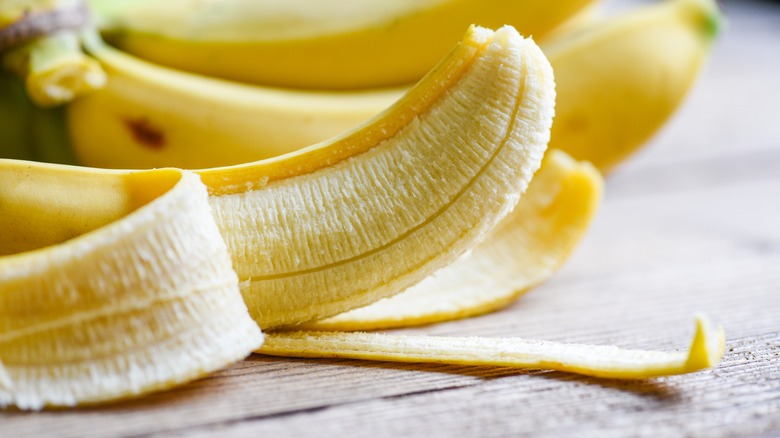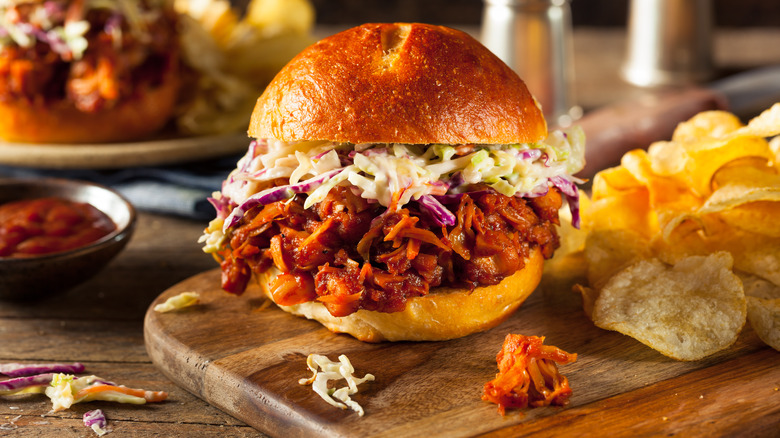This Brazilian Dish Is The Best Way To Use Up Banana Peels
Animal agriculture has had a huge impact on the Amazon Rainforest: It drives the deforestation of thousands of acres a year, according to The Guardian explains. Perhaps due to this impact, more Brazilians than ever are considering plant-based diets. One survey from the IBOPE, Brazil's Vegetarian Society, found that 14% of the country is vegetarian, and more than 60% want to eat less meat. Vegan and vegetarian restaurants have sprouted up across Brazil, where cities like Rio De Janeiro, Curitiba, and Porto Alegre boast hundreds of restaurants that offer options for plant-based eaters (via Happy Cow). However, in restaurant numbers, none can compare to São Paulo, the fourth most populated city in the world, and Brazil's hub for art, culture, and more recently, vegan food.
While São Paulo is now home to over 500 vegan-friendly restaurants with more juice and smoothie bars than there were in the past, São Paulo isn't a new pin on the foodie map. You'll see that, while there are new and trendy foods, Paulistanos are also adopting vegan versions of traditional Brazilian cuisine, according to The New York Times. The outlet says that Brazilians are swapping banana peels for meat in carne louca, or "crazy meat" sandwich, creating a vegan take on a Brazilian-style pulled pork sandwich.
Carne louca de banana
As one of Sao Paulo's most iconic sandwiches, carne louca is traditionally made by shredding an eye-of-round roast. It's then usually served during family parties, or during the nationwide midwinter festival, Junina (via Culture Trip). But, to make it vegan, Brazilian chefs found a creative way to put banana peels to use — steaming, shredding, marinating, and cooking them into a banana-based meat substitute that is, surprisingly, not bitter or banana-flavored. While this may sound new to you, banana peels have been popular in vegan cooking since 2019, and have even been used as a substitute for bacon (per The New York Times).
Banana peels are used to substitute beef in a similar recipe from Venezuela, and Bangladeshi and Indian cuisines find uses for most parts of banana plants, including the peels, flowers, and even trunks. In the United States, where banana peels are generally seen as inedible — or something to slip on — it's taken a bit longer for them to be integrated. Even during the days of pandemic-induced isolation, characterized by the collective motivation to bake banana bread every week, banana peels went largely ignored despite the bounce and flavor they add to the bread (via The New York Times). But hey, if jackfruit can do it, why can't banana peels make their way between the buns of this summer's barbecues?

